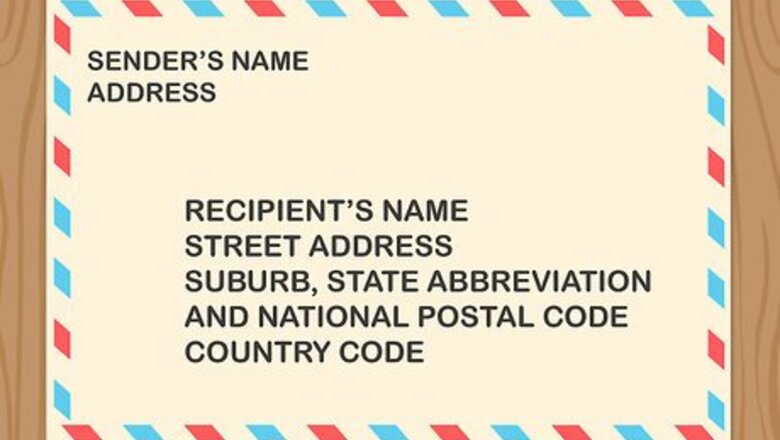
views
Addressing Your Letter
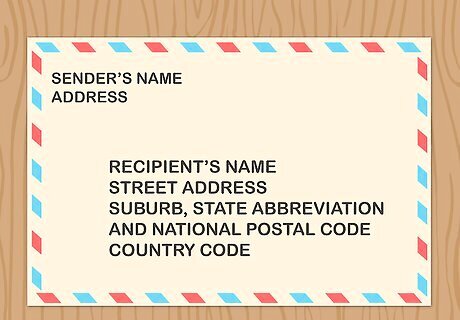
Seal your letter in an envelope. Fold the paper in thirds, horizontally, and slide it into the envelope. Depending on the envelope, you may need to moisten the adhesive with your tongue or a damp sponge, or you might need to peel off the paper backing over the adhesive before you can seal it. You can also use a bit of tape or a sticker to seal the envelope closed. Turn your envelope over. You will write on the side that is an entire blank rectangle, not the side with the flap.
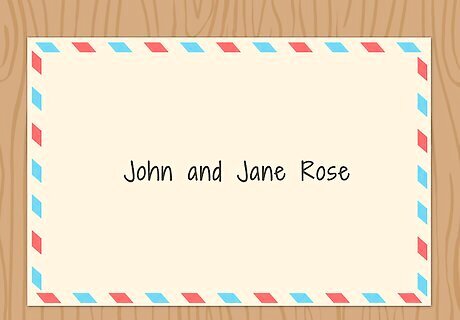
Write the full name of your recipient in the middle of the envelope. With dark ink, print their full name neatly in a single line. You can address your letter to multiple people if they live at the same place. If they both share a family name, you can write their first names, and then the last name, like: “John and Jane Rose.” If they do not share a common family name, you can include up to two people’s full names. If you are sending a formal letter, add the recipient's title ("Mr.," "Mrs.," "Dr.," and so on).
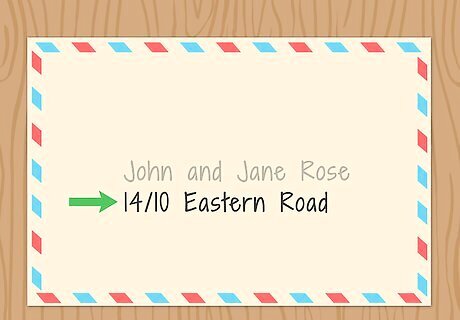
Write their street address directly below their names. The street address is the number of house or building and the name of their street. For example: "10 Eastern Road." If the recipients live in an apartment complex, place their apartment number followed by a slash before the street number. For example, "14/10 Eastern Road" would be apartment 14 of the 10th building on Eastern Road.
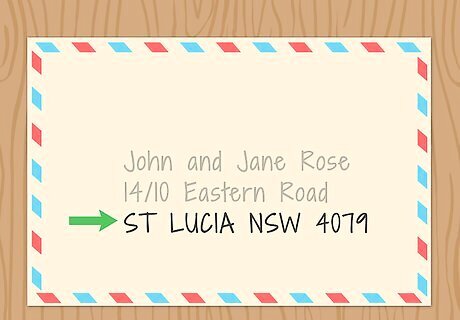
Include their suburb, state abbreviation and national postal code in capital letters. Right below where you wrote the street address, write out their suburb (e.g. Milton, Turramurra or Malvern). Then, write the abbreviation of their state or territory. Finally, write their postal code. All of these items should be on one line of writing, and all in capital letters. If your recipient has a post box number, include it here. You can find the postal code for a suburb from the Australia Post Website at https://auspost.com.au/postcode. The state abbreviations are: QLD for Queensland NSW for New South Wales ACT for Australian Capital Territory VIC for Victoria TAS for Tasmania NT for Northern Territory SA for South Australia WA for Western Australia.

Include their country code, if they live outside of Australia. Write their country code in all capitals on the same line as you wrote their town and state. For example, if you’re sending something to the United States, write “USA.” If you’re sending your letter within the country, you don’t have to write any country code. For a list of country codes, visit https://www.pitneybowes.com/us/support/postage/usps-international-country-codes.html.
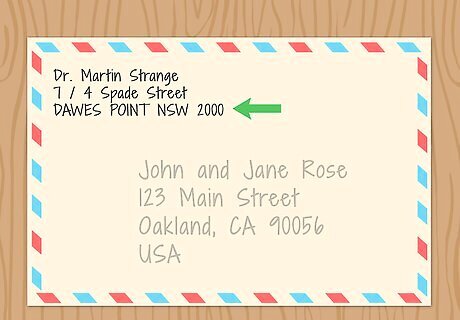
Write your own address on the top left corner of your envelope. This will be the return address in case your letter can’t be delivered. Format your address the same way you formatted your recipient’s. Write out your full name, and on the line below, write your street address. Finally, put your suburb, state abbreviation, and postal code on the bottom line.
Posting Your Letter
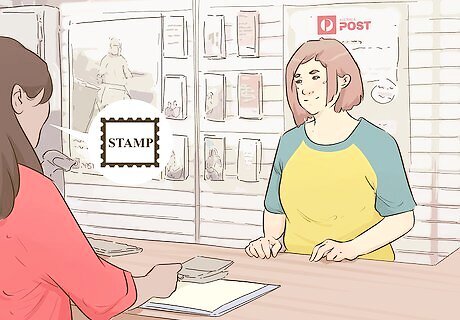
Check how many stamps your letter needs. The number of stamps you need depends on the size and weight of your letter and how far you need it to go. The maximum size for a standard letter is 260mm wide (10 in), 360mm long (14 in), and 20mm (.8 in) thick. You can send a letter to anywhere in Australia for $1 worth of stamps in Australian currency. If you’re sending your letter overseas, it’ll be more pricey. It’ll cost 2.10 Australian dollars to have your letter arrive in 10 or more days, and $18.55 to send your letter in just 5 days. If you have a concession card, you can purchase stamps at a reduced rate.
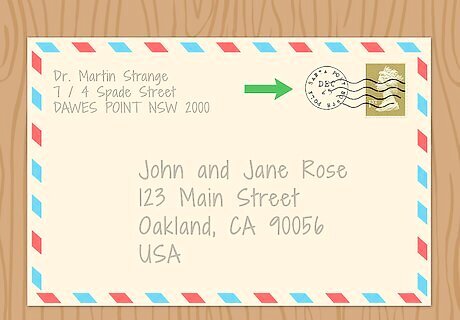
Attach your stamps to the top right corner of the envelope. You can buy stamps and stick them on yourself. If you don’t have enough stamps at home, or are confused about how many you might need, you can bring your letter to the post shop counter, and ask them to help you. If you have a bunch of old domestic 70 cent stamps, you can still use them. You can buy 30 cent stamps online or at a few post offices, to combine with your 70 cent ones to make an even dollar.
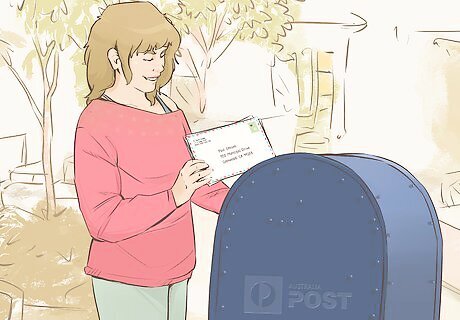
Post your letter at your local postal box or a post shop. Just put the letter in your post box, or bring it into the post shop if you prefer. Post carriers don’t work on public holidays or weekends, so if you drop off your letter then, it’ll sit for a bit before delivery. Post collection time is 3:00pm local time. That means if you post a letter after 3:00pm, they’ll collect it the next day.




















Comments
0 comment